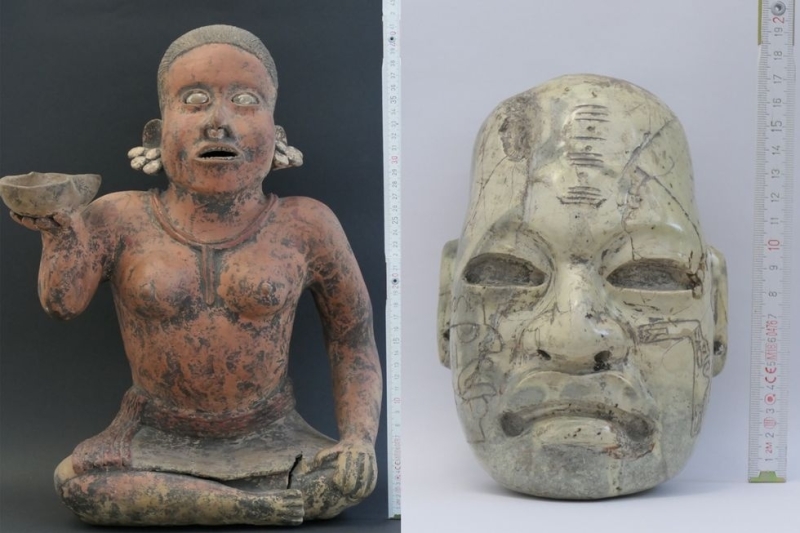Italy returns 30 stolen archaeological pieces to Mexico
Rome. The Italian authorities returned to Mexico thirty archaeological pieces seized by the body specialized in the protection of cultural heritage, including statuettes, vases and necklaces from the Totonac, Michoacan, Coyotlatelco, Zapotec, Mixtec and Mayan cultures.
"This is a concrete gesture of cultural diplomacy," said Culture Minister Darío Franceschini on Friday, after confirming Italy's commitment to combat illicit trafficking in cultural property and "return its cultural heritage to the countries of origin."
The pieces, which had been seized by agents of the Cultural Heritage Protection Command of the Carabinieri Corps in various regions of Italy, were authenticated by officials from the Museum of Civilizations in Rome and the National Institute of Anthropology and History of Mexico.
The ceremony was attended by General Teo Luzi, General Commander of the Carabineros, General Roberto Riccardi, of the Command for the Protection of Cultural Heritage, as well as the Mexican ambassador to Italy, Carlos García de Alba.
Among the pieces are three terracotta statuettes belonging to the Mayan culture of the State of Campeche (6th-10th centuries AD) and the Remojadas culture of the State of Veracruz (3rd-7th centuries AD).
Also pieces from the Teotihuacan culture from the central highlands of Mexico, from the 3rd-7th centuries AD, and from the central valleys of Oaxaca, from the 11th-16th centuries AD.
In addition to anthropomorphic terracotta, clay and stone figurines, a rock necklace and an ornate clay vase were returned.
For their part, the Mexican authorities announced the official return to Italy of the 1,271 documents that make up the personal archive of the Italian sculptor Ettore Ferrari (1845-1929), author, among other things, of the statue of Giordano Bruno that adorns the famous Plaza de Campo dei Fiori in the heart of Rome.

Comments to this:







